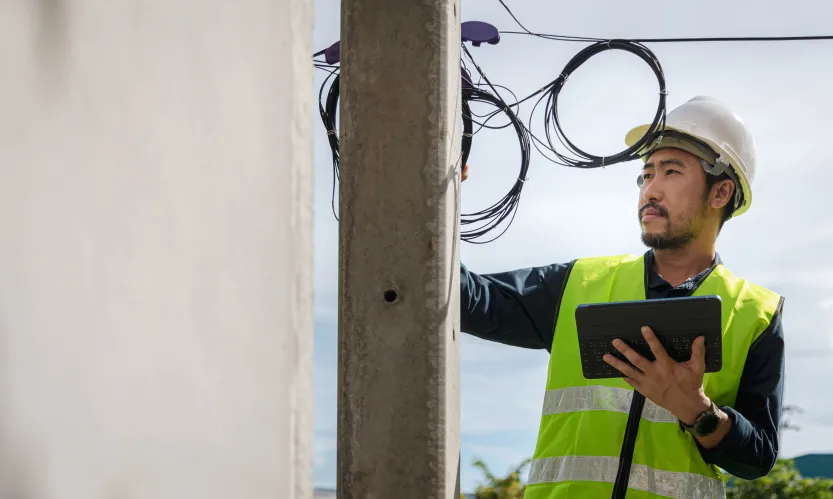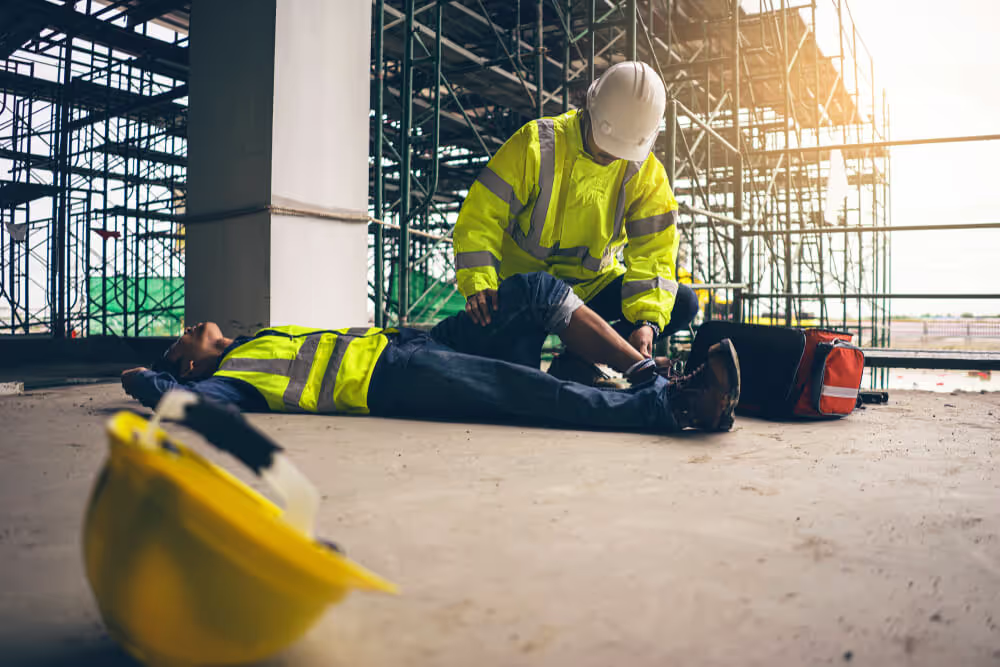Falls from a great height consistently rank as the leading cause of fatalities and serious injuries in the construction industry, accounting for 47% of injuries and fatalities and contributing to the $11.5 billion the industry pays in damages. They are also the most frequently cited violation by the Occupational Safety and Health Administration (OSHA).
Injured workers hurt your workplace morale, project execution, and your bottom line. That's why making robust and accessible fall protection plans is essential for protecting your workforce and your bottom line.
In this blog post, we'll go over:
The impact of inadequate fall protection on your workers and your business Practical tips to improve fall safety at your workplace Let's dive in!
The Business Impact of Inadequate Fall Protection A single fall on a jobsite can trigger a cascade of negative consequences that extend far beyond the immediate human cost. Understanding these impacts is the first step toward justifying investment in a stronger safety framework.
Direct Financial Costs: OSHA penalties for fall protection violations are substantial and can escalate with repeat offenses. These fines are just the beginning. A serious incident also leads to increased workers' compensation insurance premiums, which can affect your overhead for years.Project Delays and Disruptions: An accident necessitates a work stoppage. The site or a portion of it may be shut down for an investigation by your team and regulatory bodies. This downtime disrupts schedules, leading to project delays and potential liquidated damages for missing deadlines.Legal and Reputational Damage: Workplace incidents can result in costly litigation. Furthermore, a poor safety record damages your company’s reputation among clients, potential partners, and skilled workers. In a competitive market, a reputation for being an unsafe employer can be a significant disadvantage.Decreased Productivity and Morale: When workers do not feel safe, morale plummets, resulting in lower productivity, higher employee turnover, and difficulty attracting top talent. A culture of safety demonstrates that you value your team, fostering loyalty and engagement.Practical Steps to Enhance Fall Safety on Your Jobsite Improving fall safety requires a multi-faceted approach that combines proper equipment, regular training, and a proactive safety culture. Implementing a structured program is the most effective way to ensure compliance and protect your workers.
Establish a Comprehensive Fall Protection Program A formal, written fall protection program serves as the foundation for all your safety efforts. This program should be specific to the types of work your company performs and the hazards your employees face.
Key Components of a Fall Protection Program:
Hazard Assessment: Regularly conduct thorough site assessments to identify all potential fall hazards before work begins and as conditions change. This includes analyzing elevated work areas, floor openings, and unprotected edges.Method Selection: For each identified hazard, determine the appropriate method of fall protection. The hierarchy of controls dictates that you should first try to eliminate the hazard (e.g., performing work on the ground). If that isn't possible, use passive systems like guardrails, followed by personal fall arrest systems (PFAS).Clear Procedures: Document clear, easy-to-understand procedures for the setup, use, and inspection of all fall protection equipment.Prioritize Training, Education, and Accessibility Your equipment is only as effective as the training of the people using it, and their ability to access fall safety info when they need it. Some tips here include:
Information Accesibility: Use technologies like 24/7 AI support agents to enable workers to access fall safety info and procedures quickly whenever they need it. This can eliminate risky decision-making caused by not having immediate access to your safety documents. Initial Training: All employees exposed to fall hazards must receive comprehensive training on recognizing hazards and on the proper procedures for erecting, inspecting, and using fall protection systems.Refresher Courses: Conduct regular refresher training to reinforce knowledge and introduce any new equipment or updated regulations.Competent Person Designation: Appoint a "competent person" as defined by OSHA. This is someone capable of identifying hazards and who has the authority to take prompt corrective measures to eliminate them. Ensure this individual receives advanced training.Implement Rigorous Equipment Management Proper selection and maintenance of Personal Protective Equipment (PPE) are critical.
Selection: Ensure all personal fall arrest systems, including harnesses, lanyards, and anchorages, meet ANSI standards and are appropriate for the specific task and environment.Inspection: Mandate that workers inspect their PPE before each use. A competent person should conduct and document more formal inspections at regular intervals. Immediately remove any damaged or worn equipment from service.Storage: Store PPE in a clean, dry environment away from sunlight, chemicals, and physical damage to prolong its lifespan and ensure its integrity.Enforce Safe Practices for Ladders and Scaffolding Ladders and scaffolds are common sources of fall incidents. Strict adherence to established best practices is crucial.
Ladder Safety: Always maintain three points of contact. Inspect ladders for damage before each use. Place ladders on a stable, level surface. Ensure the ladder extends at least three feet above the upper landing surface. Scaffolding Safety Ensure scaffolds are erected, moved, and dismantled only under the supervision of a competent person.Install guardrails on all open sides and ends of platforms more than 10 feet above a lower level. Verify that scaffolds are fully planked and capable of supporting their own weight plus four times the maximum intended load. Leveraging Technology to Improve Safety Compliance One reason why workers get hurt is that they lack proper accessibility to safety information. When traditional safety management relies on physical documents or a disorganized online repository, this makes it difficult for workers in the field to access critical information when they need it most. This can cause them to make fast and risky decisions.
Modern platforms like AI Agent providers can create AI Agents that:
Streamline safety documentation Automate inspection checklists Provide instant access to procedures directly on the jobsite. By making safety information more accessible, you empower your team to make compliant decisions in real time and decrease the risk of fall injuries.
Symphona by SimplyAsk.ai
Whether it be through training or improved technology, there's so much we can do to help reduce injuries and fatalites from falls at your construction workplace. If you want to learn more about how our solutions can help your safety teams, book a free consultation with us. our other solutions for construction here.
.svg)

.svg)


.svg)





.avif)
.avif)





.svg)







.svg)

.svg)
.svg)
